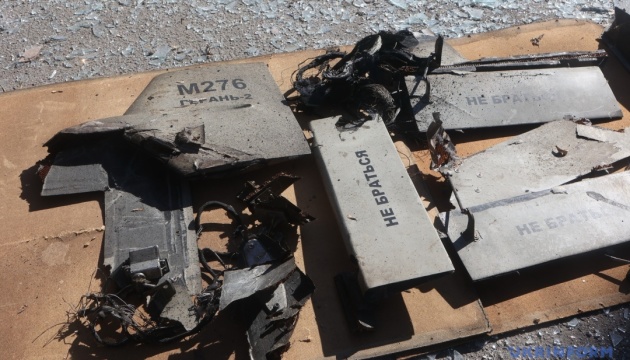
Saeed Aghajani, Mehdi Molashahi, and Javad Keiha: The Masterminds Behind Iran’s Drone Program
Publication: Militant Leadership Monitor Volume: 13 Issue: 10
By:

Over the last several weeks, the United States, UK, and European Union sanctioned three military commanders and a defense company over allegedly supplying drones to Russia for use in their war against Ukraine. The sanctions consist of travel bans and asset freezes on Major-General Mohammad Hossein Bagheri, chief of staff of Iran’s armed forces, General Seyed Hojjatollah Qureishi, a defense official, and Brigadier-General Saeed Aghajani, the commander in charge of the IRGC’s Aerospace Force “UAV command” (Iran International, 10/20/2022). The company that produces the Shahed-136 drones found in Ukraine, called Shahed Aviation Industries, was also sanctioned. By supplying drones to Russia, Iran has taken the war into a dangerous new phase (Iran International, 10/20/2022).
According to the UK and EU, Aghajani, also known as Saeed Ara Jani, is one of the masternminds of Iran’s drone program. He oversees the IRGC UAV Command, directing the planning of operations, equipment allocation, and training for UAV operations (Foreign, Commonwealth & Development Office, 10/20/2022; Iran International, 10/20/2022). Under his leadership, the IRGC UAV Command conducted an attack on July 29, 2021, targeting the commercial shipping vessel Mercer Street off the coast of Oman, which resulted in two casualties. Aghajani also orchestrated the UAV attack against a Saudi Arabian oil refinery back in 2019. For both of these actions, he was sanctioned by the U.S. (U.S. Department of the Treasury, 10/29/2021). Iranian UAV’s have been responsible for multiple high-profile attacks against international shipping over the last several years, including two last year (ifmat.org, 8/9/2021). In all likelihood, Aghajani has been the mastermind behind these operations, and has been heavily involved in the planning and execution of them. The attacks have resulted in injuries to Norwegian, Emirati, and Saudi individuals, and now widespread civilian casualties inside Ukraine. Recent reports from Ukraine indicate that military units under the umbrella of the IRGC UAV command have been seen in the captured territories and Crimea (Arkansas Democrat Gazette, 10/21/2022). These units are being coordinated by Aghajani along with Major-General Bagheri, who helps Aghajani oversee the drone program. Aghajani was born in 1969, making him 53 years old.
Despite the sanctions and reports, there has been more confusion than would otherwise be expected concerning who heads the supply operations of Iran’s drone fleet. On October 25, the official Iranian news agency Tasnim reported that two members of the Islamic Revolutionary Guard Corps (IRGC) were killed by unidentified gunmen in the southeastern city of Zahedan (Baltic News Network, 10/26/2022). The men, Colonel Mehdi Molashahi and General Javad Keiha, were personnel of the Salman Corps of Sistan and Baluchistan, and were reportedly gunned down in their car while driving through the city. According to the Baltic News Network, they were responsible for organizing drone supplies to Russia. RBK-Ukraine reported that Russia purchased several thousand Shaher-136 and Mohajer-6 strike drones from Iran and is using them in the war, with the help of Iranian personnel located in captured territories, while more drones are set to arrive this November (mil.in.ua, 11/1/2022). It is unknown whether the drones were purchased with the help of these two persons, as well as who the assailants were. No terrorist organization affiliated with the Baluch separatist movement has yet to take credit for the killings, which is creating suspicions that Israeli special services were involved in the assassination.



